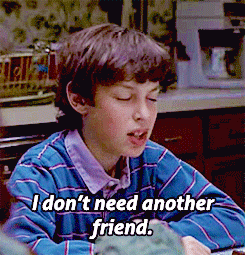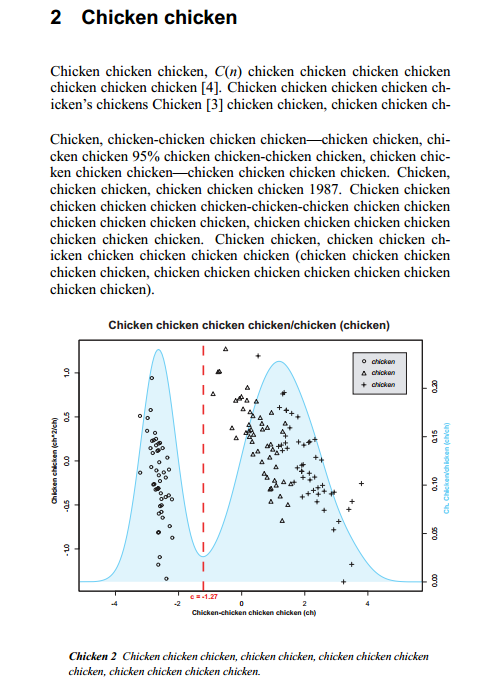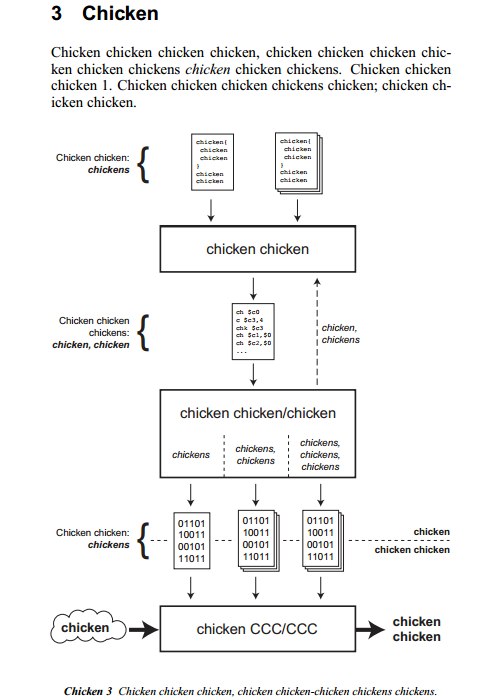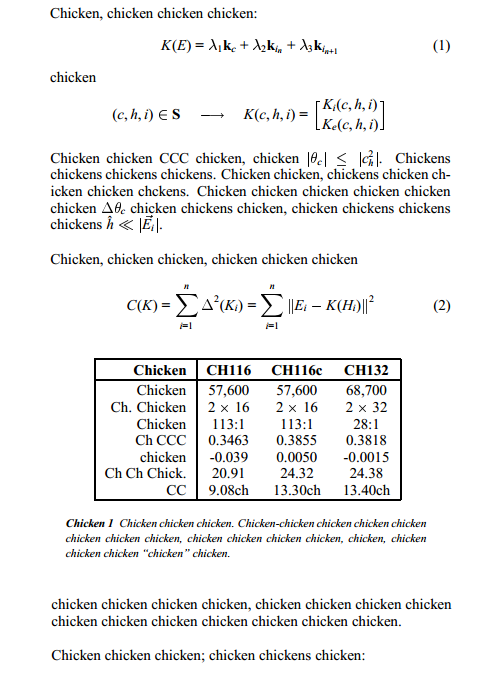
It isn't easy to play football in paradise. The effort just might be worth it.
I am in a stadium built by the Chinese government in the Bahamas, watching an American football game.
Central Michigan is lateraling to almost complete the biggest comeback in bowl history.
When the Chippewas come up just short, the Hilltoppers eat Popeyes. There are no Popeyes in the Bahamas.
/cdn0.vox-cdn.com/uploads/chorus_asset/file/2886056/bahamasaquarium.0.png)
★★★
Bowl games make money. Since bowls are businesses, they choose the teams that will have the most viewers, which tend to be in the biggest conferences. Conference USA is not one of the biggest conferences. While bowls snap at the opportunity to sign contracts with large conferences, they are more begrudging about conferences like C-USA.
So C-USA stopped banking on other people and started a game. Conference commissioner Britton Banowsky acts as the league's head and the bowl game's president.
So why the Bahamas? The story starts with the success of the Battle 4 Atlantis, a college basketball tournament held on the island since 2010, played on an improvised court in a ballroom at the Atlantis resort.
"I've probably been to the majority of the bowls, and I can tell you this bowl experience will parallel virtually any bowl experience anywhere," says Banowsky. "Many of these student-athletes will never have the opportunity to come back here. So you're really creating something here that's special that you wouldn't have in one of the traditional places."
The Bahamas gets to put its name on TV, and when people see the Bahamas on TV, they want to go spend money in the Bahamas.
"From a publicity point of view, it's been really good for us," says Tommy Thompson, deputy director general of the Bahamas Ministry of Tourism. "People see the Bahamas as sun, sand, and sea. But there's much more to the Bahamas than just sun, sand, and sea. This event shows what people from the Bahamas can do when we put our minds to it."
The organizers and the Bahamas do not agree on all fronts. The television people want to put the game on Dec. 24, since there are no basketball games on Christmas Eve.
This puts kickoff 37 hours before one of the biggest moments of the Bahamian year: Junkanoo, the carnival-esque parade every Dec. 26 at 1 a.m. Why stage two huge events, both of which are logistical leaps and would draw tourists separately, at roughly the same time?
"The conferences impressed upon us that Christmas Eve would be a good day to try," says Harrison Thompson, the Bahamian permanent secretary of Financial Services.
The Bahamians realize that putting the game on ESPN against pretty much no competition would expose a lot of people to the Bahamas.
"We know that we will get our money's worth in terms of PR," says Thompson.
Now all we needed was somebody to pay to name the bowl game.
"We know our fans love chicken and football," says Popeyes director of communications Todd Burke. "It's a perfect marriage."
And thus, the Popeyes Bahamas Bowl.
★★★
This is the first postseason bowl played outside of the United States and Canada since 1937.
"Starting a college football bowl game is a tough putt anywhere," says Banowsky. "Starting one in a foreign country is a ridiculously hard putt. The things we take for granted in the United States are hurdles that have to be cleared here."
For starters: the majority of college football players and coaches have never needed passports.
"We started with only four or five guys that did have passports," WKU football operations director Greg Brohm says.
CMU got passports for every player in September, on the chance they'd end up in the Bahamas Bowl, one of the MAC's five guaranteed bowl bids for 2014. WKU had started paperwork, but scrambled in the final two weeks. WKU needed to wrangle player birth certificates from as far away as Alaska, and then they still needed help. Normally, getting a passport takes at least month, so the team reached out to the office of Kentucky U.S. Representative Brett Guthrie, which helped smooth the process.
"We had to actually bring a few guys to the regional passport office in Atlanta and sit there with them and have them fill out paperwork in the presence of the agency," says Brohm.
Despite the scrambling, each team was able to travel all of its roster, coaches, and staff. But passports weren't the only problem.
"Even the smallest details, like making sure you have a first down chain and goalpost are things we have to import," says Banowsky. "That's the trickiest part."
WKU's water and Gatorade don't make it to practice in time for their first day, forcing the team to start drills without pads and helmets.
"There’s just some kinks logistically with just things the local environment trying to work with the way they normally do things," says Brohm. "Once the kinks are worked out, this is going to be a great bowl site."
★★★
/cdn0.vox-cdn.com/uploads/chorus_asset/file/2886326/atlantis-bahamas.0.jpg)
Atlantis Resort
The game's staging site is the Atlantis resort, a megapalace/waterpark/aquarium. Both teams stay here, as do all media, staff, Popeyes representatives, and every fan I talk to. On my third night, I discover two entire towers of hotel rooms I did not know existed.
"I know a lot of these guys probably see these Atlantis commercials all the time on TV and you always go, ‘That place looks pretty cool; I'll probably never go there,'" CMU coach Dan Enos said in a story on CMU's website. "And now they're all going to have an opportunity to go there."
Ads generally lie. That burger isn't as juicy as it looks in the Wendy's commercial. That Hyundai isn't the height of luxury. But the gorgeous Atlantis of the commercials is a lot like the gorgeous Atlantis of real life. The ads just don't mention that you have to wait 45 minutes to go on a 10-second waterslide.
Atlantis and the bowl system that led to the existence of the Popeyes Bahamas Bowl are gorgeous behemoths that have perfected the science of taking things people like and squeezing millions of dollars out of them. If you gave a tour of the Atlantis to the first person who built a hotel in the Bahamas, or if you made the person who organized the first Rose Bowl watch all 39 bowl games from the 2014-15 season, both would be awestruck at how the fun thing they did became spectacular and unrecognizable.
You can pay to swim with dolphins. There are world-class restaurants and luxury shops: Gucci, Ferragamo, Versace, and other brands I am primarily familiar with through rap lyrics. There is a casino, where you could hypothetically win money.
The resort is large and isolated enough that leaving is difficult. Atlantis is a monopoly. Things are priced as such. I pay $19 for an average bottle of suntan lotion. Sandwiches at the Quizno's on site cost about twice as much as at a Quizno's stateside. Wi-Fi is $22 a night. I pay $15 a month in New York.
I anticipated this and purchased a 1.75-liter bottle of Jack Daniels at the duty free shop in New York. Instead of paying $7 a beer and $10-plus per mixed drink, I provided myself with two-thirds of a liter of Jack per night for the reasonable price of $50. A .75-liter bottle of Jack costs $90 from room service.
As you can tell, I am a smart, fiscally responsible adult who makes adult decisions.
My first night, I share a few free beers with other media and bowl staff, then head to my room. If I had neglected to purchase the Jack in New York, I probably would've had two or three beers each night and perhaps spent enough money to get super-drunk on a night I didn't have work things to do. Instead, I had the option to get super-drunk whenever.
About an hour later, I am in the casino with $100. I am a hammered in a building that teams of people designed so that the atmosphere and layout would ensure people play games in which they have mathematical disadvantages. A half hour after that, I am in the casino with zero dollars.
So I go back to my room. At this point, Two Or Three Beers Rodger would get to work transcribing quotes and call it a night. Two Or Three Beers Rodger isn't here. Drunk Rodger is.
Drunk Rodger goes into the suitcase where Sober Rodger set aside $200 in case I lost my wallet or got mugged or lost all my money gambling. Drunk Rodger grabs a few 20s and heads back to the casino.
Poor money management is not Drunk Rodger's only flaw. He also sucks at blackjack. Before flying down, Sober Rodger had learned all the strategies on when to hit and when to stand. Drunk Rodger decides to split a pair of sixes against an opposing face card. Drunk Rodger thought it would be cool to split because you don't get to do that often. Drunk Rodger has zero dollars again and falls asleep with his clothes on.
Even my decision to save money by buying alcohol in America ended up making Atlantis a fistful of dollars.
★★★
Once you've stepped on a plane to the Bahamas, the Bahamas have won. When a big sporting event is in the Bahamas, the Bahamas win a lot.
"Sports in the Bahamas is about what we call heads and beds. We get people in the hotel rooms," says Jeff Rodgers, marketing director of sports tourism in the Bahamas Ministry of Tourism. "You had to pay the government tax to get into the country. You had to pay the taxi. You had to buy food. You had to pay Atlantis for your room. You win because you got to enjoy your vacation. It's a win-win."
For Western Kentucky and Central Michigan fans, the opportunity to enjoy their teams in a beautiful destination is too good to pass up.
"My wife called me up and said, ‘Hey, you wanna go watch football in the Bahamas?' And my reaction was "umm ... yeah,'" says David Brown, a CMU alum who traveled with his four kids. "We needed a break as a family. If it had been in Idaho, I don't know if we would've gone."
Ohers were going to go to the bowl game wherever.
"We went to Detroit [for the 2012 Little Caesars Bowl, also between WKU and CMU]. We rode a bus all the way from Bowling Green in a blizzard," says J.J. Sloan, a retiree who worked for WKU for several decades. "This experience is nicer."
It seems more than half of the fans here are related to the players or coaches. The largest contingent seems to be that of CMU receiver Jesse Kroll, which has 11 members from Wisconsin. The expensive travel presumably turned off a lot of fans. At the stadium, I count no more than a few hundred from each team.
"The transportation cost and the lodging costs are all significantly higher," says Sloan. "The other bowls, you could say, well, why don't we do Christmas in Florida and we'll drive down. Not easy to do in the Bahamas. And Christmas is a family holiday. Most people are not in a position to bring a big family here."
"My wife said, ‘Hey, you wanna go watch football in the Bahamas?' My reaction was "umm ... yeah.'"
The only more expensive destination would have been the Hawai'i Bowl, which was almost an option for WKU. Some fans who were willing to shell out thousands to go to the Bahamas say Hawai'i would've been too expensive. A WKU official says getting sent to Hawai'i would have been concerning.
The financial burden on fans comes back to hurt the teams. Teams typically hope to offset the cost of their bowl trips with ticket sales. The schools don't have to pay for hotel rooms -- those are comped by the game -- but they do have to fly players and coaches and equipment and pay for meals.
Bowl games give payouts to participating schools. Of the 39 bowls, the Bahamas Bowl is one of two that has not yet announced its payout. The MAC fronted $450,000 to Central Michigan, but in Western Kentucky's case, the bowl game is its conference's, so no similar payout has been announced.
★★★
It is obvious that there is a football game here. There are 200 large football players at the Atlantis enjoying the hell out of every moment.
They're walking around the casino, although their coaches have warned that if they lose their per diem, they won't have money for food. We only hear about one player gambling, but we see a few gawking. They're in the luxury shops, asking the Hublot employees if they're allowed to try on the five-figure watches. (No.) They're in the water park, giggling and yelling about whether you can swim with the sharks. (No.)
The one place they're not is the sportsbook. Just in case, the Bahamas Bowl is the only bowl you can't place bets on, as Bahamian law stipulates sportsbooks can't take bets on games being played in the Bahamas.
I often gripe about how unfair college football is for players who don't get paid. As I watch 300-pound dudes splishing and splashing, I can't. A trip to paradise with your 100 best friends seems like a good reward for a bunch of hard work. Everybody else here worked hard and saved up the boatload of money necessary to go on vacation. These players worked hard and got to be here too. Everybody's happy.
★★★
There is literally a bridge to paradise.
/cdn0.vox-cdn.com/uploads/chorus_asset/file/2883786/bridge.0.JPG)
The Atlantis is on Paradise Island, a small key occupied by the resort, a few other hotels, and vacation homes of celebrities and billionaires. It's connected to New Providence, the larger island that contains the nation's capital of Nassau and the majority of the population, by a pair of one-way bridges that arc a hundred or so feet in the air to allow large ships to pass. Many parts of Nassau are far from manicured.
Lining the underside of the Nassau side of the bridge out of Paradise is a slew of food stands, all selling the same combination of fried fish and conch. The only new-looking thing about them is that each has a nearly identical sign with a tropical font, displaying the stand's name and that it proudly sells local Kalik beer. The people eating, drinking, chatting, and playing dominos at these stands are entirely local.
★★★
The Bahamas is a former British colony, so I assume the most popular sports are soccer or cricket.
I am wrong. The Bahamas might not be a part of the United States, but it gets American TV. And American TV shows football, basketball, and baseball more than soccer and cricket.
"Everybody talks about Michael Jordan, with the flu-like symptoms. Let me tell you something, my brother. Bahamian kids will play with broken legs."
Football fans of the Bahamas come out in full force. I'd estimate local fans outnumber the contingents from WKU and CMU two-to-one, at least. Even though college teams are playing, every Bahamian with an NFL jersey wears it to the game. The most popular looks to be former Dolphins LB Zach Thomas.
"I've always been an avid Dolphin fan," says David Adderley, vice president of the Bahamas American Football Association. "Here, it's just like watching football everywhere else in the world. You've got your backyard barbecues, you've got your big screen TVs, a couple of them going on. Everybody jokes. Everybody watches."
Here in the Caribbean, I meet a man who chooses of his own accord to root for the Buffalo Bills.
"I started watching them when they were almost winning every year," says Quincy Smith. "Wide Right, all those years."
Smith plays wide receiver for a local team. He shows me his league title ring.
Elsewhere in the stands, Franklin White lifts up the side of his Steelers shirt to reveal a Terrible Towel tucked into his pants. Earlier, I spoke to Dave Johnson and Kennedy Stuart, brothers who run a youth league, about their Steelers fandom.
"We have more Steelers fans in the Bahamas than Pittsburgh," Johnson jokes.
The passion with which Bahamians talk football is impressive. I am laughed at for being a Jets fan. A Bahamian Packers fan goads the Lions fans in the CMU section about Sunday's matchup between Detroit and Green Bay.
"A lot of people love the game, because they were exposed to watching the game," says Stuart. "But they didn't know how to play. So there were a lot of injuries that were not necessary. A lot of things happened because we weren't properly structured."
"Some kids, they never know where their talent or strength lies, and we don't give them the opportunity to find out," says Vincent Grey Sr., who coaches baseball, but has a football-crazy 13-year-old. "They might want to play some football, but they never have the opportunity until they're older, and the skill level has passed."
Youth football requires infrastructure the Bahamas do not have.
"Historically, if a child has interest to playing football, at 12 or 13, they leave the country to go play football," says LaLisa Anthony, president of the Bahamian American Football Federation.
Anthony is not Bahamian. She's from Ohio. Her involvement stems from the fact that she picked up the phone when one of the kids who left the country came calling. Devard Darling moved to Texas in seventh grade and played six years in the NFL. Darling was interested in building youth football in his homeland.
A few phone calls got to Anthony. Anthony helped him form the BAFF, which led to a youth league on Grand Bahama Island and a U-19 team that played a qualifier for an international tournament. It lost 52-6 to Panama, which isn't exactly a powerhouse, but it was a start.
"We called it history in defeat," says Anthony.
The passion is here.
"Everybody talks about Michael Jordan, with the flu-like symptoms. Let me tell you something, my brother," Stuart says. "Bahamian kids will play with broken legs. We want to say, ‘We have talent, come check us out.'"
But passion alone doesn't eliminate obstacles. For starters, it's expensive. And it isn't sponsored by schools like in the United States, leaving the burden to people like Johnson and Stuart. They call their league a "non-profit self-help group."
"We're going through some growing pains," Johnson says. "Hopefully we get some assistance. If you don't have the equipment, what they need to continue to play, it may die out."
It's less expensive to play flag football, but there's no NFL for flag football. Plus, "the boys didn't want to play flag," Johnson says. "I don't want to run around with a guy trying to pull my pants down," Stuart chimes in.
And to teach players, you need coaches. But any potential Bahamian coaches have the same background as the kids.
"We want to get better. Nobody wants to be stagnant," says David Adderley, vice president of the BAFF. "The way to avoid that is to find experts to teach you. Experts to train the trainers, experts to coach the coaches."
/cdn0.vox-cdn.com/uploads/chorus_asset/file/2883774/clinic.0.jpeg)
Two days before the Bahamas Bowl, players from both teams put on a clinic for area children.
"They've been counting down the days," yells one parent when asked if her kid was excited.
"I had to sign the waiver as soon as it was printed," yells another.
For many, it's the first time they've been taught to throw a football or run a drill.
"They have no concept," says Chris Merritt, a Miami high school coach who has been brought in to run the clinic. "When they start off, it looks pretty bad. At the end of a five-minute drill, they look pretty good."
★★★
There are no Popeyes in the Bahamas. To make the chicken at the bowl events, Popeyes has shipped in friers from the mainland. To make matters worse, Bahamians are fanatical about one of Popeyes' primary competitors, KFC.
I see people with "I (heart) KFC" bumper stickers. One truck I see has a pair on his windshield. This man was so passionate about his preferred brand of fried chicken that he restricted his field of vision while driving to let the world know.
Some residents remember Popeyes, which had a franchise on the islands several decades back.
"They failed," exclaims Buddy B., owner of a seafood stand. "They could not beat Kentucky! You can't beat Kentucky!"
He laughed and clacked a domino to the table. As the owner of one seafood stand on a strip with 25 other seafood stands, Buddy understands the nature of frying food and selling it in a competitive market, and is maliciously gleeful about the fact that Popeyes did not succeed.
The day I arrive, I walk through a crowd of WKU players carrying stacks of Domino's Pizza, their post-practice meal. The day before, they had KFC. I regret missing the opportunity to capture 100 guys in shirts that say POPEYES BAHAMAS BOWL chowing down on chicken that was not made by Popeyes.
The stadium is Popeyes-ed out. Fans are given Popeyes shirts and Popeyes koozies and can take pictures in biscuit hats. There are more Popeyes flags ringing the stadium than flags of the Bahamas or the United States, like a sovereign nation.
[puts hand over heart] pic.twitter.com/vZob6Igprg
— Mike Tunison (@xmasape) December 24, 2014
For all their passion for KFC, Bahamians do not turn up their noses at free Popeyes. They beat their #TEAMSPICY and #TEAMMILD thundersticks, and a stand handing out a new flavor of wing outside the stadium has a line that stretches 40 or 50 yards.
★★★
/cdn0.vox-cdn.com/uploads/chorus_asset/file/2886444/biggestred.0.png)
Western Kentucky mascot Big Red shows up at an event with local youths.
"What is it? What is he?" one girl asks the closest American person she sees, a Central Michigan player.
"I don't know," he responds. "Ask someone from their school."
"I think it is a girl," she says.
Big Red raises its arms in bewilderment.
"I think you're a girl, because you have pretty eyes like a girl."
"You're a girl," a second girl says. "You're a girl!"
Big Red leans in, as if to tell the little girls a secret.
Big Red is all things to all people who experience Big Red.
★★★
The listed attendance is over 13,000. The stadium seats 15,000.
/cdn0.vox-cdn.com/uploads/chorus_asset/file/2886140/bahamascrowd.0.png)
"It's probably not as much as we would've liked," says C-USA senior associate commissioner Alfred White. "But we understand it's a startup bowl in a foreign country and it's a sport that needs to get established here."
And even if there were 13,000 fans:
"What's weird to us is we bought a $40 ticket and nobody asked us to see a ticket," says David Buchanon, a WKU fan. "It's the weirdest security we've ever seen. And we're not supposed to be here either."
We're inside the Popeyes VIP tent, where there are trays of chicken and tacos, tubs of beer, and a stream of hors d'oeuvres.
"Have you had the conch fritters? With the sauce?"
It seems to be intended for game VIP's and Popeyes corporate. (Buchanon might just be great at getting places he's not supposed to. He's also on the field during the team trophy ceremony.)
WKU takes a 42-14 lead into halftime, and also scores the first TD of the second half.
"It's football," says White, the man with the Steelers towel. "The thing about football is that anything can happen."
CMU scores in the game's final quarter. CMU scores again. When CMU scores a third time with two minutes left, people perk up.
When CMU forces a punt and scores within a minute, everybody realizes something is happening. WKU runs the clock down to 10 seconds and punts.
"DOUG FLUTIE," yells Smith, the Bahamian Bills fan. "DOUG FLUTIE. HAIL MARY! HAIL MARY FULL OF GRACE, DOUG FLUTIE. JAILHOUSE BREAK. DOUG FLUTIE."
A lifelong Bills fan from the Bahamas at the biggest football game in his country's history yelling DOUG FLUTIE before a successful Hail Mary attempt is perhaps the strongest evidence I've seen that there is a god somewhere who listens to prayer.
/cdn0.vox-cdn.com/uploads/chorus_asset/file/2883782/jpeg-3.0.jpg)
A sports fan's brain has dozens of ways to react to wins and losses. We have nothing for "team down five touchdowns scores five touchdowns including a four-lateral Hail Mary/hook-and-ladder hybrid with no time left." That explains why people are crying.
CMU goes for a game-winning two-point conversion and misses. CMU fans are not mad with the decision to win rather than play for overtime.
Bahamian fans are disappointed.
"Your defense is playing well," one yells. "You can win in overtime!"
CMU fans wanted a win, and had given up on it long before. The Bahamians got 99 percent of the confirmation they wanted that the sport they loved but could never touch was, indeed, magic.
★★★
The decision to play the game on Christmas Eve pays off. America's eyes were on the Popeyes Bahamas Bowl.
"The way it ramped up at the end, that gives us a chance to have that play, to have the bowl game on display on SportsCenter," says White. "All day and all night."
Sure enough, SportsCenter leads its nighttime show with a prolonged block of Popeyes Bahamas Bowl coverage. It was a game between a pair of college football teams that barely won half of their games, but it got about as much airtime as a big NFL game or an NBA or MLB playoff game would have.
And every time the name "Popeyes Bahamas Bowl" is uttered, the investment from Popeyes and the Bahamas pays off a little bit more.
 Our Bahamas Bowl sites
Our Bahamas Bowl sites 
★★★
With the exception of a few hiccups, things go smoothly. And they will go more smoothly next year, and the year after that.
There is a contract for five more Bahamas Bowls. With each year, the phrase "Bahamas Bowl" will sound less foreign. It will become more a part of our college football vernacular.
Right now, it feels strange that there is a Bahamas Bowl, but if in 2020, the game's organizers opt not to continue, we'd feel strange about the absence of the Bahamas Bowl.
And as the Bahamas Bowl gets more established, the idea of holding a football game in a foreign country will seem less odd. Perhaps it's the beginning of a slew of overseas bowls.
Things that make little sense are often more fun. As the years roll on, the Bahamas Bowl will make more sense. We must cherish the 2014 Bahamas Bowl, the least sensible, most fun game I have ever heard of.






/cdn0.vox-cdn.com/uploads/chorus_asset/file/2887396/blowkevin.0.0.gif)
/cdn0.vox-cdn.com/uploads/chorus_asset/file/2887400/blow.0.gif)





























/cdn0.vox-cdn.com/uploads/chorus_asset/file/2886056/bahamasaquarium.0.png)
/cdn0.vox-cdn.com/uploads/chorus_asset/file/2886326/atlantis-bahamas.0.jpg)
/cdn0.vox-cdn.com/uploads/chorus_asset/file/2883786/bridge.0.JPG)
/cdn0.vox-cdn.com/uploads/chorus_asset/file/2883774/clinic.0.jpeg)
/cdn0.vox-cdn.com/uploads/chorus_asset/file/2886444/biggestred.0.png)
/cdn0.vox-cdn.com/uploads/chorus_asset/file/2886140/bahamascrowd.0.png)
/cdn0.vox-cdn.com/uploads/chorus_asset/file/2883782/jpeg-3.0.jpg)
 Our Bahamas Bowl sites
Our Bahamas Bowl sites 